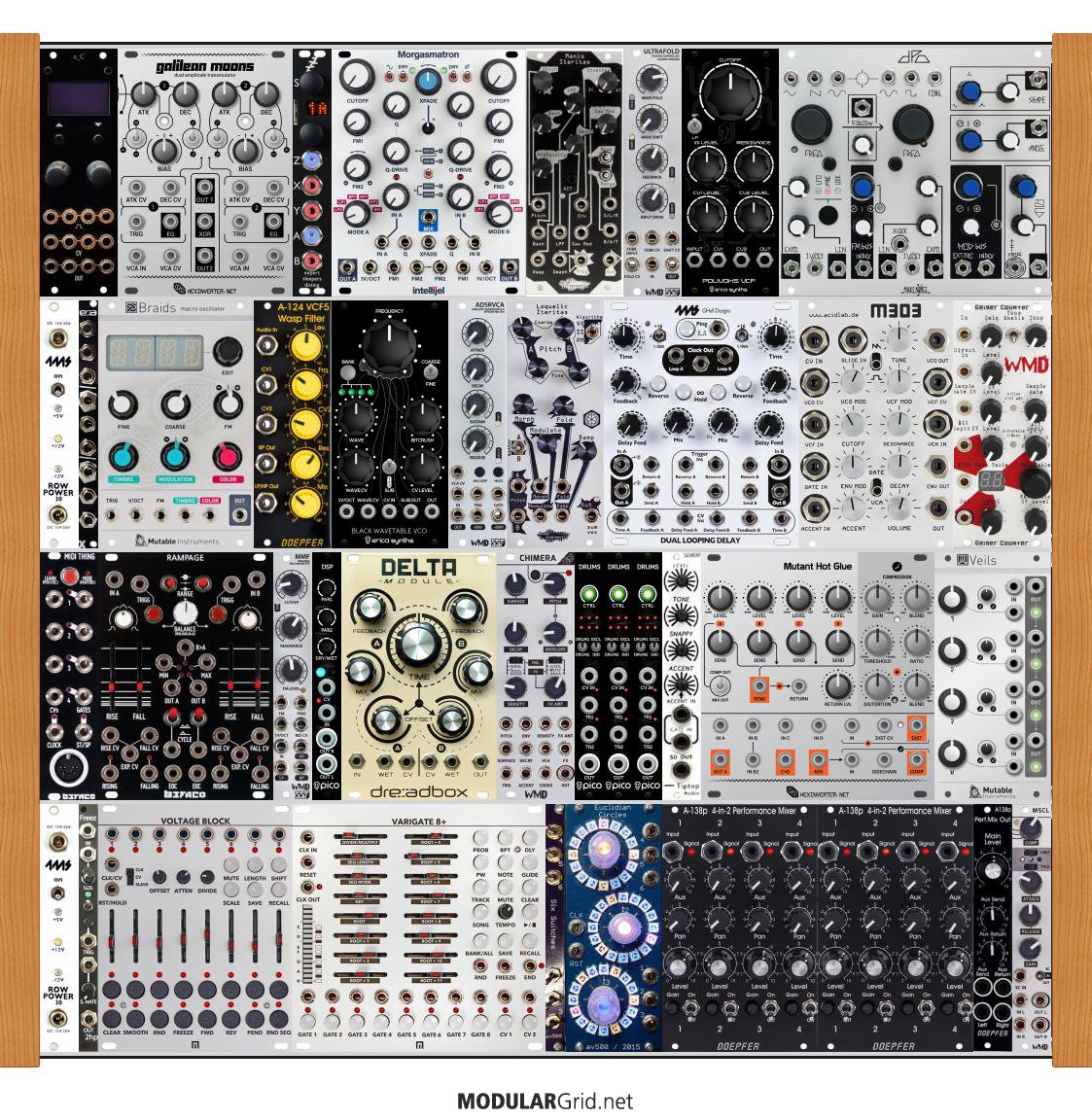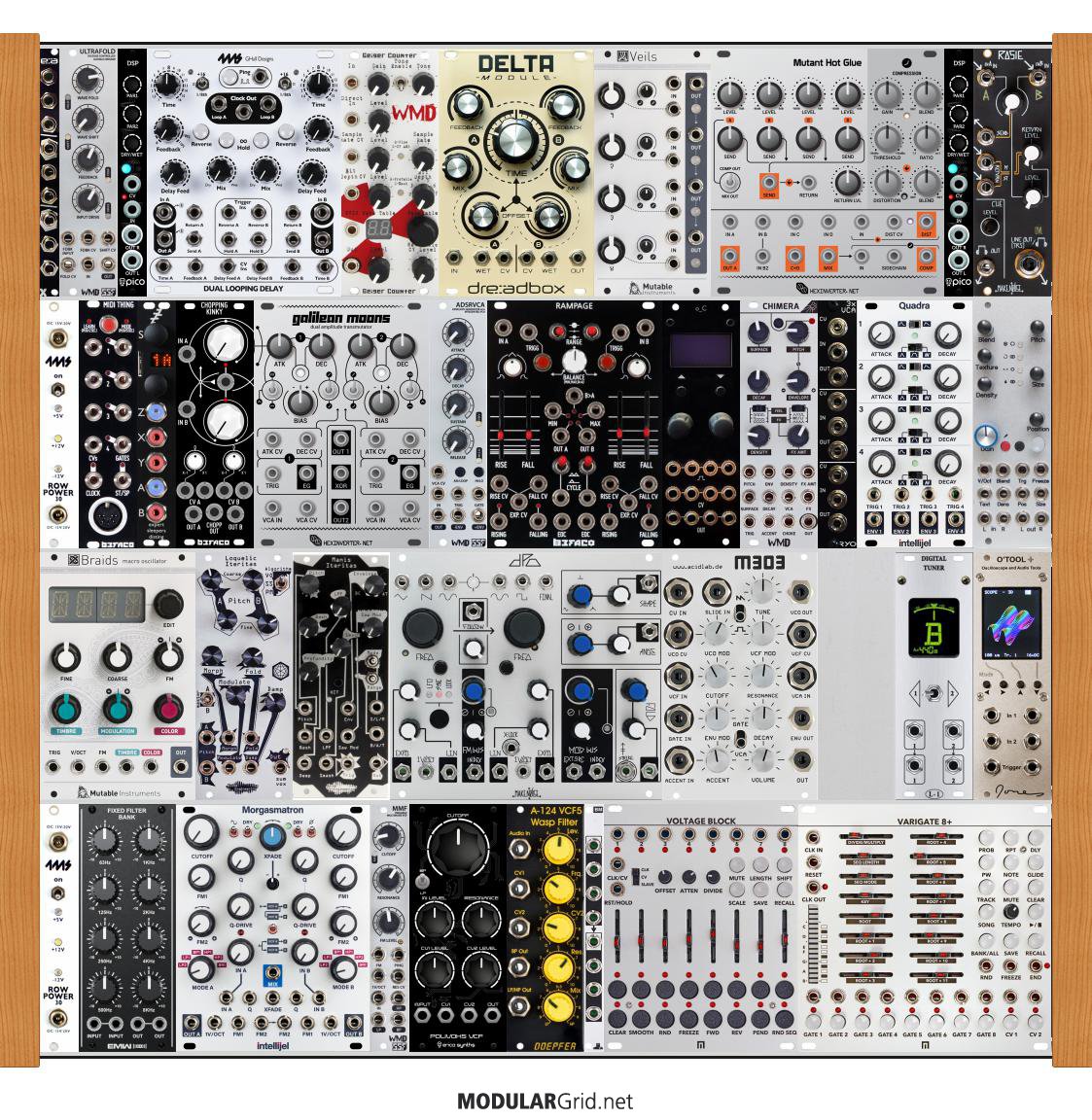Not really a question of too many voices, I don't think...but too many different audio sources. Consider why many modulars tend to have several of the same VCO; it's not a matter of being 'simple', but a matter of having something on which you have a level of programming ease that allows you to get back to sounds that have worked in the past. When you have a hodge-podge of sources, as in this rack, it becomes more difficult to program each different element in its different way to go back to a desired result. That's why I feel it's a better move to have several basic VCOs, a few different ones besides those, and then rely on waveshaping after mixing/crossmodulating these sources to get a result. Also, having all of these disparate sources carries a problem in that you can't exactly 'gang' them...so to get each signal path to perform properly, you have to have loads of envelopes, VCAs for both audio and CVs (the latter is apparently missing from this rack), and loads of filters, and this gets into a huge amount of panel space being overrun by the needs of all of these signal chains. I would suggest finding a way to simplify this, possibly losing a lot of the 'sexy' modules in deference to a number of more compact 'boring' ones...because once you start interconnecting them, they stop being so 'boring'.
Couple of other things: first off, too many final mixers. Both the Hot Glue and the A-138 set take up a good bit of space and, at the same time, they're pretty redundant. If the important factor with the MHG is the waveshaping, chuck it and get a waveshaper plus a little submixer for its input. But the A-138 also has some problems here, in that there's not any way to use that stereo compressor after the A-138o. That module does your final gain control, auxes, and final step-down to line level, and the MSCL will want to still see things at synth levels, ergo it won't work well at the very end of your signal path...and there's no way to insert it into the final stereo bus of the A-138 since that's bussed behind the panel and has no patchpoints.
Secondly, this is a real scrambly layout...and as a rule, it becomes harder to work with intuitively and less satisfying as an instrument. I'd suggest taking everything out of your build except the P/S inlets, then making a simple paper map of what functions go where in the open space (generators, modulators, modifiers, controllers) and then sticking to that map when laying it out again. It's a lot trickier, but the disciplined effort is worth it, especially when there's a huge chunk of change involved. Take some time to look at other builders' efforts that follow that method (a lot do) as well as some of the 'classic' prebuilt modulars and then rethink.
Good luck!



